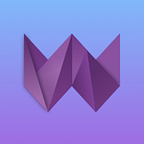The Evolution of Webix from 1.0 to 6.4
Webix JavaScript UI library is a proprietary product of the XB Software company. For the first time, Webix was released 6 years ago and since then it has come a long way of growth and development. Now it’s an acknowledged UI framework that significantly facilitates and speeds up cross-platform web development. It contains 100+ UI widgets and fully-featured CSS / HTML5 JavaScript controls. Webix also offers a number of templates and complex widgets that help accelerate the development of custom business web apps. The library is available under open-source GNU GPL v3 and commercial licenses. Let’s trace the evolution of Webix from the very beginning till now and highlight its key achievements and improvements.
Webix 1
The first release of Webix JavaScript UI library took place on the 7th of July in 2013. At that time it was very fast and small (about 90 kb gzipped). Webix contained a lot of UI widgets, starting from simple controls and ending with powerful widgets such as a fully-featured and fast JS DataTable.
In addition, the framework supported both external and internal drag-and-drop operations. From the very start of its existence, Webix has always provided a well-documented and comprehensible API that was easy to understand and learn even for junior developers. Moreover, Webix 1 offered the possibility of integration with jQuery and Backbone.js.
Webix 2
The release of Webix 2.0 brought even more enhancements. One of the main changes was the introduction of two Webix editions. They included Standard edition which was available under GPL license and PRO edition that was available for those who bought a Commercial license.
Moreover, the DataTable widget gained a lot of new cool features such as Advanced filter, Rowspan and Colspan, Grouped columns, Header menu, Saving current state, Advanced editors, Custom height for footers and headers, and Vertical header. Another big improvement was the extended localization. The quantity of Webix locales increased from 5 to 9 locales in Standard edition and to more than 305 locales in Pro edition. Moreover, Multi-text inputs and the possibility to add a progress bar or a progress icon to any Webix widget appeared.
And the functionality of Tabbar and PropertySheet was significantly improved. In addition, Webix 2.0 provided promises for all ajax operations, which enabled users to treat the result of asynchronous operations without callbacks.
Webix 3
The most important enhancement of Webix 3.0 release was the introduction of a new powerful SpreadSheet widget which allowed editing data and had the Excel-like functionality. Besides, a new Rangechart widget was added. It allowed selecting data range with the help of a movable frame.
The next significant step was the introduction of the microframework Webix Jet for building single-page applications.
The changes also included the possibility to revert the changes during editing within all the data widgets and area selection in a standard Datatable (Treetable).
One more improvement was the ability to export data from any data widget into a PDF file (export to PDF).
Other important new features included Excel viewer, PDF viewer, export to Excel for all data views, and export to PNG for all views.
Webix 4
There are four crucial improvements in Webix 4. One of them is accessibility. Starting from its 4th version, Webix allows creating web apps that are accessible to people with special needs. This means that such apps have a keyboard navigation, special markup for screen reading software, and contrast skin.
One more prominent addition is Angular 2 compatibility. In other words, using Angular 2 with Webix became much easier. The improvements also included a number of updates to the SpreadSheet widget and the introduction of new Webix 4.0 widgets. The new components included the Map widget based on Google MapsTM and DateRangePicker control that was available only in Webix PRO edition.
Webix 5
One of the key achievements was the update of Webix Jet to version 1.0. It allowed using Webpack-based toolchain and ES6. So coding was much simpler, while view resolving and routing became more flexible.
With the release of Webix 5 two new widgets appeared: GeoChart widget and Hint widget.
GeoChart widget showed information about regions and countries based on the given data. And the new Hint widget was aimed at guiding users through a website or an application, especially in case of complicated contents and multiple controls. Moreover, a vertical mode for Slider widget was added.
Webix 6
With Webix 6 the new default material skin and its compact version saw the world. Besides, a new Comments widget was introduced. It’s aim was to enable end-users to discuss tasks right in the application with the help of comments.
Moreover, Kanban widget was updated and acquired a number of new features such as a new modern design; a popup card editor for total control over the tasks; the ability to add comments; a card action menu for the majority of common actions; a fast way to give tasks with the help of a dropdown list.
Other Webix 6 enhancements included the release of Webix Jet 2.0, full support of all the existing skins by complex widgets, stylish tooltips for any part of an application, visual export of charts to PDF, and improved drag-n-drop in data components.
Conclusion
From the very start of its existence, Webix has never stopped evolving and broadening its horizons. It has improved immensely and gained a great number of top-notch features. It has grown into a powerful JavaScript UI library that allows building high-performance web applications.
